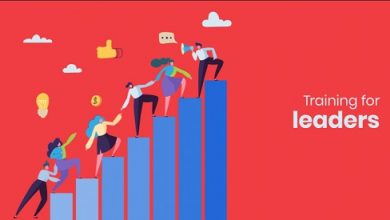Unconscious bias types its detect examples and negative effects
Unconscious biases
In this article we will provide you the information about the Unconscious bias types its detect examples and negative effects.
Neuroscience explains unconscious biases as brain mechanisms resulting from the organization of the mind itself. This ordering occurs due to lived experiences, frequented environments or as a result of our ancestral and/or primitive heritages.
These factors trigger prejudgments, discriminations, stereotypes, generalizations, unbeknownst judgments, and unjustified exclusions. Despite not being a rule, most of the time, these beliefs occur involuntarily. In fact, many of them are unrelated to the individual’s character and could even be avoided.
Therefore, we say that a belief acquired throughout existence represents an unconscious bias in action. These mechanisms can be triggered by characteristics such as:
The fact of maintaining or propagating unconscious biases ends up dictating our daily behavior , often in an imperceptible way. Furthermore, such an attitude can be extremely harmful , bringing consequences .
In personal life, an unconscious bias can cause friction in a group of friends, for example. In the professional world, a pre-judgment may result in the exclusion of a candidate from a selection process .
What are the types of unconscious biases?
There is no predefined and exact list of unconscious biases. They arise according to “patterns” developed according to our worldview . However, it is possible to cite the most common types in interpersonal relationships.
1-AFFINITY bias
Represented by the tendency to better evaluate people with whom we have some identification or who look like us. Also known as similarity bias, it is one of the most frequent types in human relationships. In this context, people seek to connect, choose or evaluate other individuals who share the same interests.
2-Perception or appearance bias
It occurs when we reinforce stereotypes and standards imposed by social or cultural influence in the context in which we operate. In general, we make judgments about an individual who belongs to another group, without considering the qualities of that subject, that is, the famous “generalization”.
3-Confirmatory bias
It is established when we look for information capable of confirming our theories about something or someone. In these cases, we tend to reject what does not support our initial hypothesis.
In this sense, this bias is very harmful to the organizational climate , as it ratifies a prejudiced thought rooted in the subconscious. This posture results in shallow judgments and fails to consider relevant information about a third person.
4-Halo Effect or Horn Effect
Involuntarily, we express preference or reject a certain person considering only information about them. This effect confirms the human propensity to assess positively or negatively, even without knowing the full context.
5-group effect
It’s when we follow a group’s parameters and behavior, usually because of the pressure it exerts. This trend makes people seek to fit into a certain social pattern . In this case, the human language. The objective is not to deviate from the current model. In the end, everyone ends up converging on the same opinion or idea.
6-maternity bias
Even today, there is a consensus on motherhood as a negative factor for women’s productivity . Overall, having a child would affect their commitment and their job responsibilities. This is the maternity bias, an impediment to promotions and leadership positions among professionals who are mothers.
How to detect examples on the desktop?
The diversity has gained ground in the companies, and with it, increased the challenges in people management . After all, the Human Resources analyst needs to deal with a multitude of profiles, opinions and worldviews. Below, we’ll look at examples of unconscious biases in the corporate world.
1st situation: affinity
Imagine a candidate being chosen for the position because they play the same sport as the recruiter. This happens because of the identification between the parties. In this case, the person responsible for recruiting establishes a mental connection with the recruit, believing it to be the most suitable option for the company.
But this unconscious bias is dangerous, as it can lead managers to promote or privilege employees they identify with , when, in fact, everyone should receive the same treatment based on reason.
2nd situation: perception or appearance
Recruiters or companies that fail to hire people with tattoos, earrings or piercings are, in fact, exerting a perception bias. Here, professionals who do not fit the “socially accepted” profile come up against prejudices and judgments based on appearance . A mistake, as the external appearance cannot prevail over professional qualification or cultural fit with the company.
3rd situation: confirmatory
Do you know of any cases where the recruiter ignored test results just to justify his favoritism for a candidate? Still, did you distort information collected in an interview with the same objective? These are classic examples of unconscious confirmatory bias. But the opposite, that is, justifying a dislike to disqualify someone, is also an example.
4th situation: halo effect
The halo effect kicks in when HR observes that a candidate has an important qualification gained while working in another organization. For the recruiter, this factor will determine the skills of the recruit. The same perception happens when a professional is discarded for the simple fact of being out of the market , as he preferred to dedicate himself to some personal project.
5th situation: group effect
This is a very recurrent situation that exemplifies the group effect. Imagine a work meeting made up mostly of men. With few women or just this one. Thus, the male group is dominant and drives the agenda, while the woman has little — or no — space to speak or express an opinion.
6th situation: maternity
The maternity bias has as an example the difficulty that women face to gain projection in companies . After all, the possibility of getting pregnant at some point in your career can affect your professional performance, for example, when mothers are not scheduled to travel under the allegation that their children would be an impediment.
What are the negative effects of unconscious biases?
Unconscious biases are a barrier in the corporate world , regardless of hierarchical level or sector. They even manifest themselves in the recruitment and selection processes . In this sense, tendencies for or against something, person and/or group are harmful and have negative impacts on work relationships.
1-toxic organizational culture
Discrimination or judgments related to ethnicity, race, ideology, age, gender, sexual orientation or physical and behavioral characteristics make the work environment hostile and unpleasant .
Thus, it is up to the HR department to identify prejudiced attitudes and implement measures to combat them. A toxic organizational culture prevents employees from being treated with equality, respect and dignity.
2-lack of engagement
The plurality of profiles in a company should not be an obstacle to the engagement of teams . On the contrary, committed employees understand, respect differences and perform their functions in harmony. In this context, communication is also important and must flow clearly.
Unconscious biases disrupt professional relationships, impacting productivity. Therefore, they affect the exchange of experiences and the capacity for empathy among peers. These mechanisms produced by the brain cause a lack of engagement and motivation .
3-Increased turnover rate
Working in a company with a toxic organizational culture affects the engagement of professionals. The consequence is the growth of turnover rates . After all, all factors contribute to the dismissal of the employee affected by unconscious biases.
Imagine living with people who judge, discriminate or favor some over others. It certainly isn’t pleasant. In an adverse scenario, the feeling of insecurity increases and dissatisfaction recurs.
In this context, the lack of acceptance triggered by a limiting belief increases turnover in companies and affects employer branding .
4-Drop in productivity
How to be productive in an environment that discriminates, generalizes, judges and excludes? Very difficult, isn’t it? But how can we work with dedication and achieve results if unconscious biases come from employees and managers?
In these cases, the affected employees tend to be demotivated , to the onset of work -related illnesses and, consequently, productivity decreases.
Therefore, identifying unconscious biases in the organization avoids problems of productivity, turnover, engagement and job satisfaction. Also, promoting a healthy environment is an HR duty.




